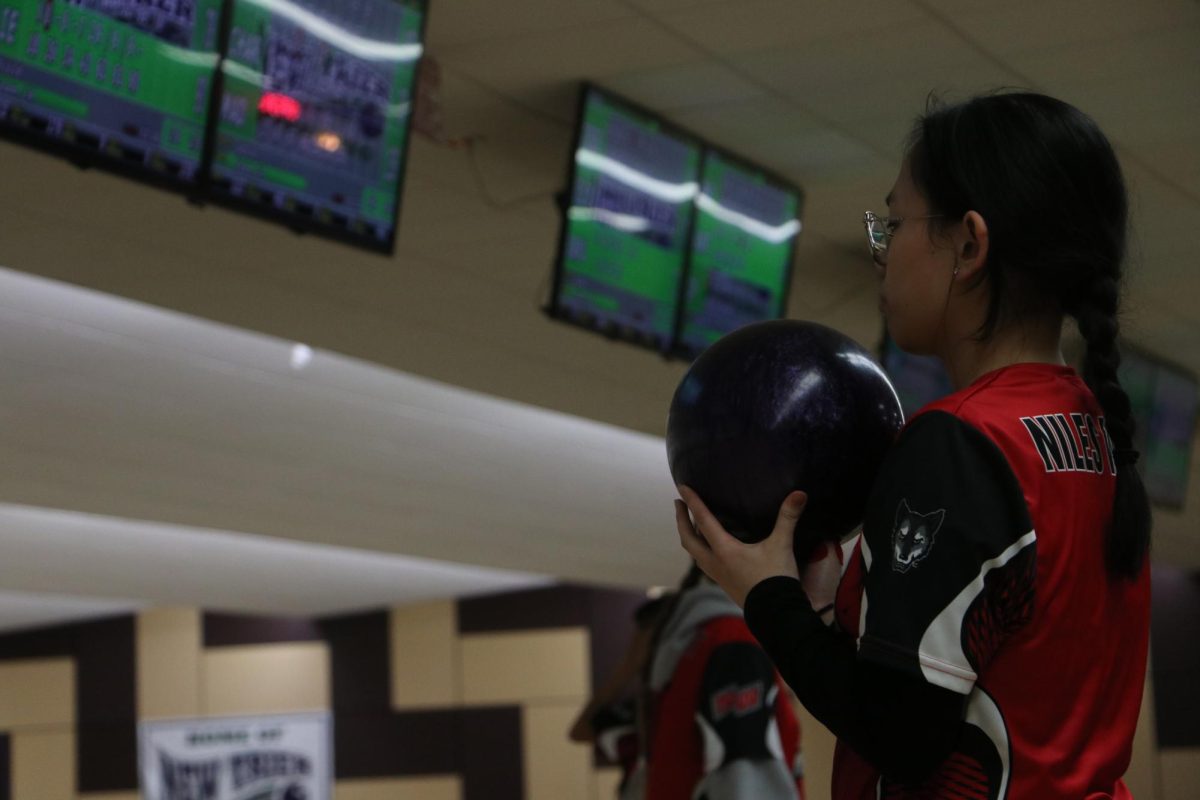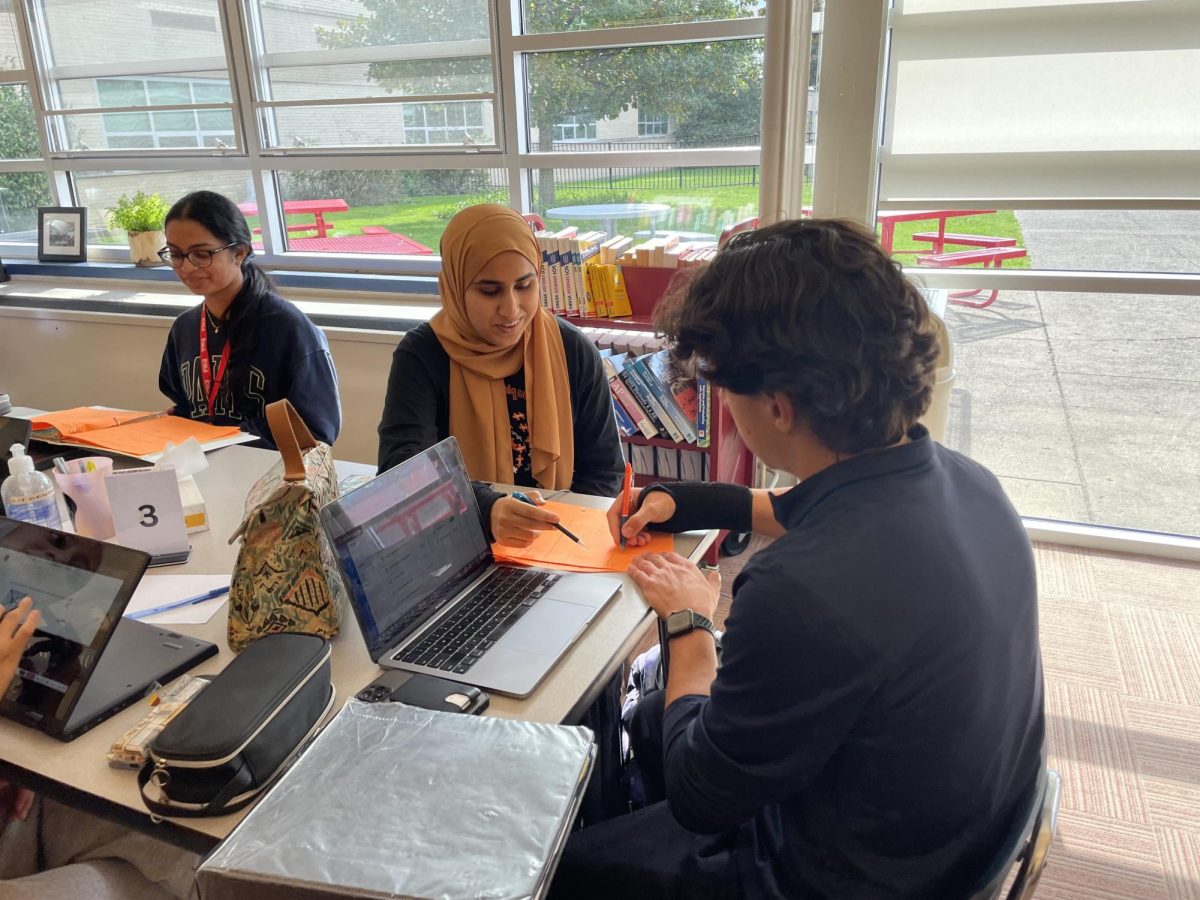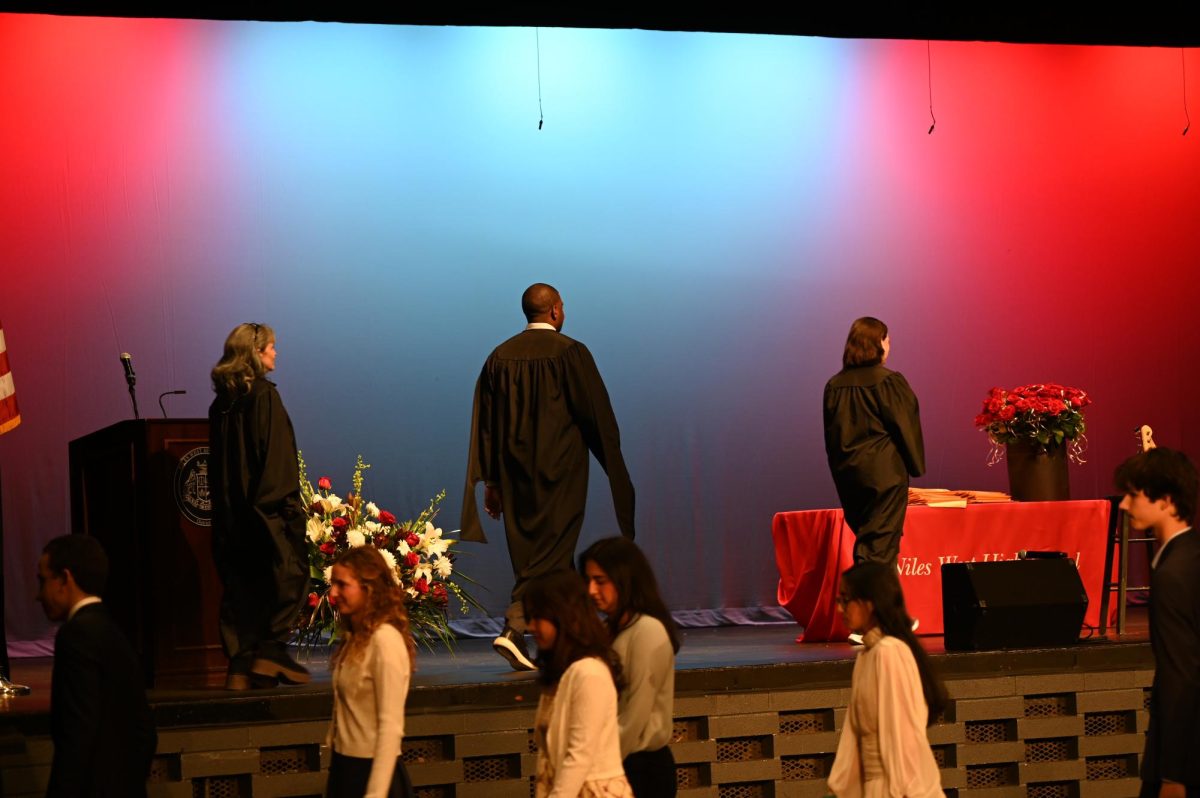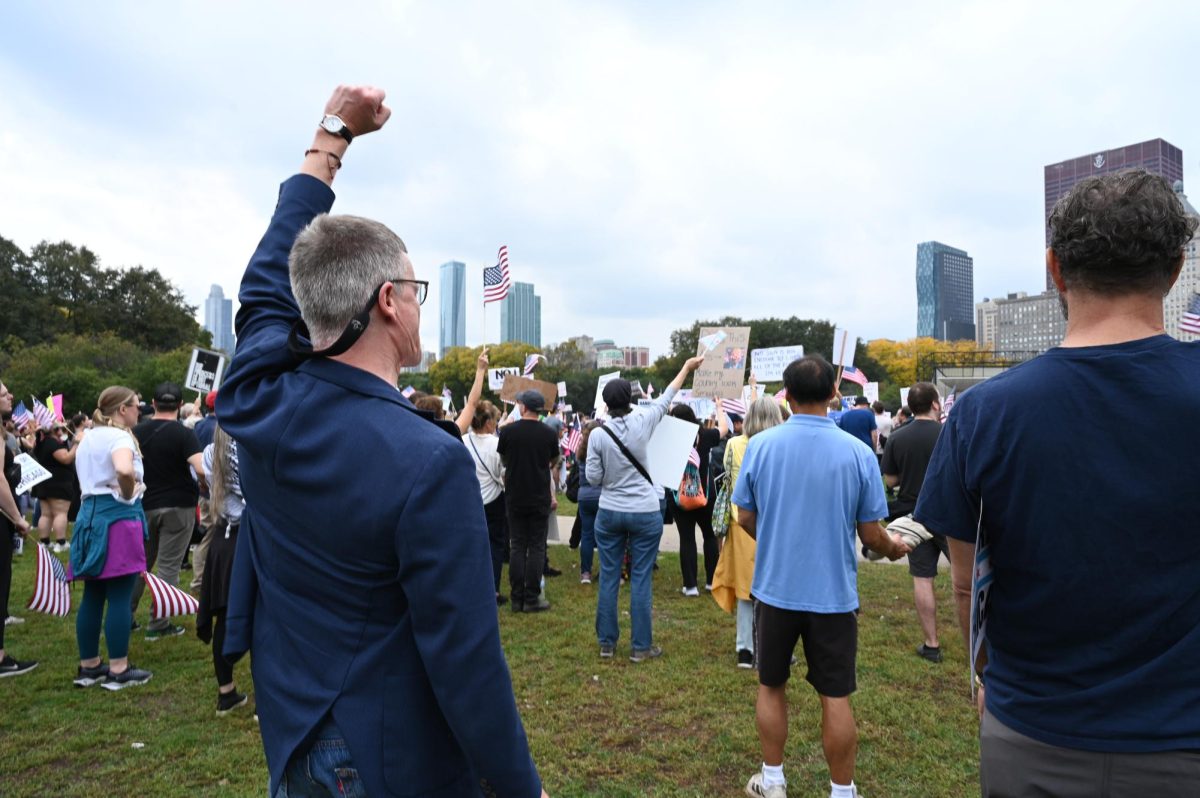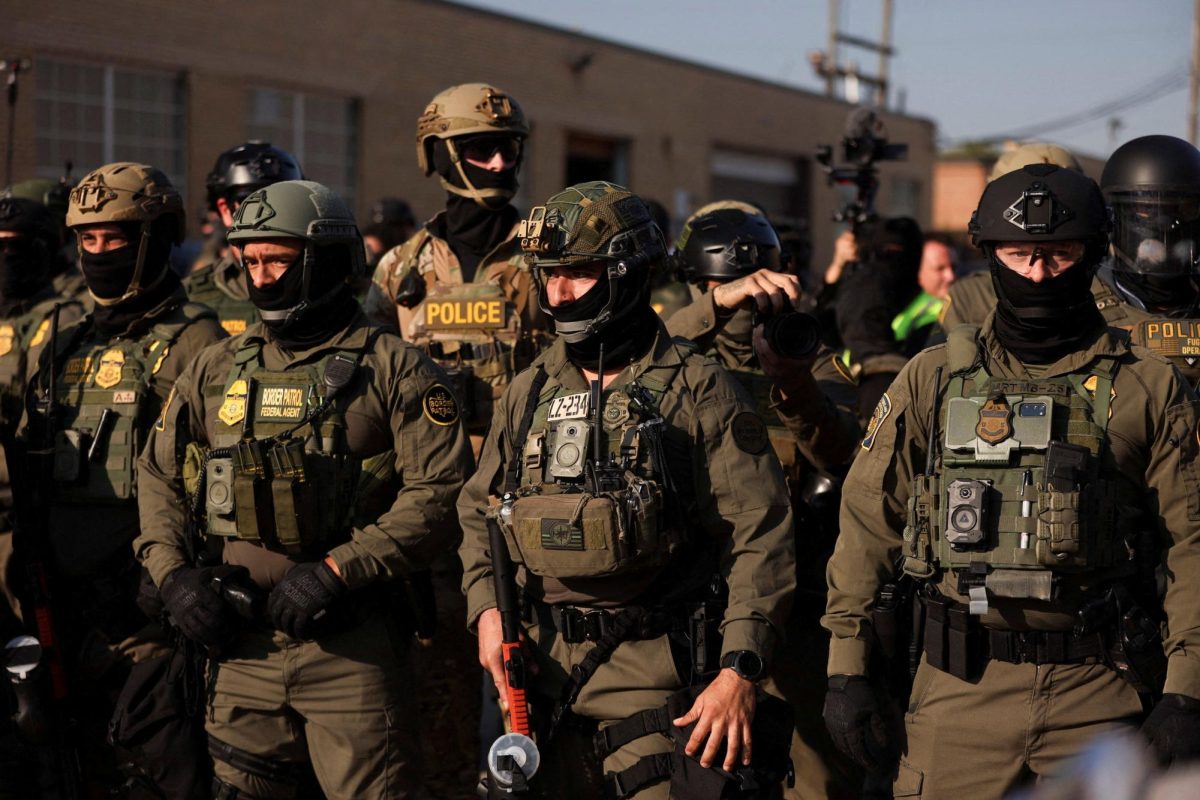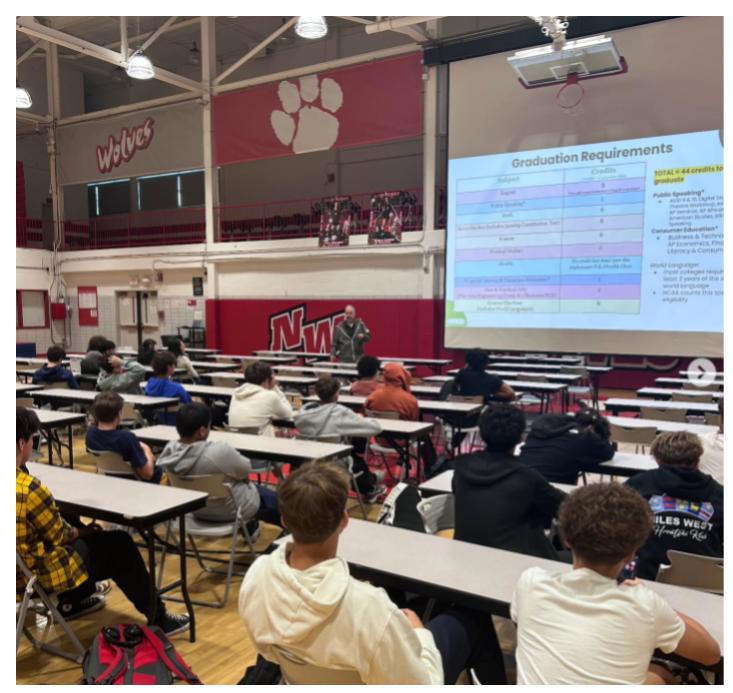Senior Hasan Hedayat was held in the Restorative Practice Center (RPC) for nearly five hours after carrying a handmade sign around school that read “a classroom of children was killed by Israel yesterday.” Hedayat described his experience in a public comment during the Sept. 9 District 219 school board meeting.
The sign, which Hedayat carried against his chest during passing periods on Sept. 5, was inspired by the NAACP anti-lynching campaign from the early twentieth century. According to Hedayat, he was brought to the RPC without explanation, and after waiting there, assistant principal David Hawk called Hedayat to his office. He was told he could not carry the sign at school.
“The only explanation I was given was that it ‘might offend a Jewish Israeli student, a Jewish Israeli student could be or might end up being harassed’ and that my personal safety ‘might be at risk,'” Hedayat said at the board meeting.
Hedayat recalled being instructed to fill out a student statement form explaining his intention behind creating and carrying the sign while he was in the RPC. After multiple meetings with Hawk and Assistant Principal Andrew Sinclair, his mother was contacted.
“They never explained to me what law or school code I was violating,” Hedayat said. “They also told me I was not being punished, but I could not help but notice in the student handbook, some of the punishment procedures. Notifying [of] parents/guardians- my mom was called. Disciplinary conference- I had to meet with my dean several different times. Temporary removal of the classroom- I was held from the beginning of second period to the end of seventh period.”
Hedayat was released from the RPC without his sign at the end of seventh period and picked up the sign after school.
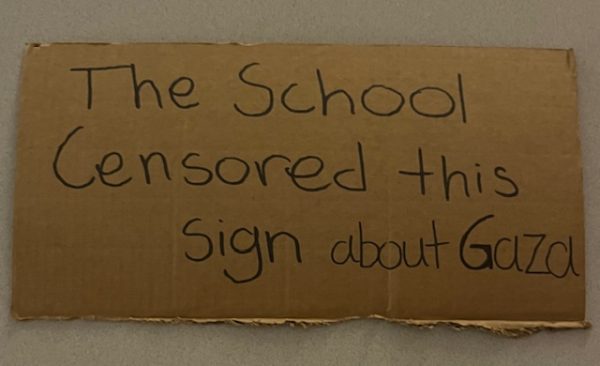
On Monday, Sept. 8, Hedayat brought another sign to school that read “the school censored this sign about Gaza.” Hedayat was called to Hawk’s office. A day later, he made a public comment at the board meeting.
Other commenters at the board meeting supported Hedayat, including Saba Kaiseruddin, Hedayat’s mother.
“I am familiar with the sign, and I’m also obviously familiar with Hasan, ” Kaiseruddin said. “He would never do anything that would hurt anybody…I would like for this to stop, not just for my son, but for all people who are really being discriminated against at Niles West.”
West alum Sa’ad Quadri teaches at MCC Academy, a Muslim parochial school with campuses in Skokie and Morton Grove. His public comment referenced his high school experience and the way students were encouraged to share their differing opinions.
“Signs like this allow students to express themselves in a nonviolent way where there may be discomfort brought forth,” Quadri said. “That discomfort allows teachable moments.”
In an interview with NWN, Hedayat brought up the 1969 Supreme Court case Tinker v. Des Moines. According to the decision, public schools cannot restrict students’ freedom of speech.
“The school cannot censor free speech unless it provides a substantial disruption to the learning environment,” Hedayat said. “[The assistant principals] did not give me any proof that it had.”
Chicago personal injury, federal crime and civil rights attorney Jerry Bischoff reviewed the Sept. 9 board meeting footage and questioned whether the school’s disciplinary actions were lawful.
“Based on my review, it appears that the young man engaged in pure speech protected under the First Amendment,” Bischoff said. “He carried a small sign which called attention to controversial military actions waged in the middle east. This was an act akin to the students who wore arm bands in school to protest the Vietnam War in the 1960s. In Tinker v. Des Moines, the Supreme Court ruled that this was constitutionally protected speech.”
According to Hedayat, when his dad emailed principal Steve Parnther asking what school code he violated, Parnther responded that the applicable school code was related to creating a substantial disruption.
“All students have free speech,” Parnther said. “We all have free speech, but there [are] limits to it…In terms of a school standpoint, our job is to ensure that students feel safe. Our job is also to ensure that we’re minimizing any disruptions that may happen.”
According to Parnther, the sign was reported to administration. Hawk believes that school officials’ main concern is maintaining a safe school environment.
“Anytime a student raises a concern, we take it seriously and want to make sure we understand the full context,” Hawk said. “As school officials, our first priority is to ensure our school environment remains safe and free from disruptions. We want our students to feel as though they can express their feelings, opinions and values, while doing so in a way that does not present a risk to safety or disruption to learning.”
Bischoff did not see Hedayat’s actions as interfering with the learning environment.
“I’m having a tough time seeing how this student’s actions interfered with the operation of school or had an effect on the rights of the other students,” Bischoff said. “You do not lose your right to free speech just by walking into school. You have the right to speak out, hand out flyers and petitions and wear expressive clothing in school- as long as you don’t disrupt the functioning of the school or violate the school’s content-neutral policies.”
When asked if he’s considering legal action, Hedayat chose not to comment.



